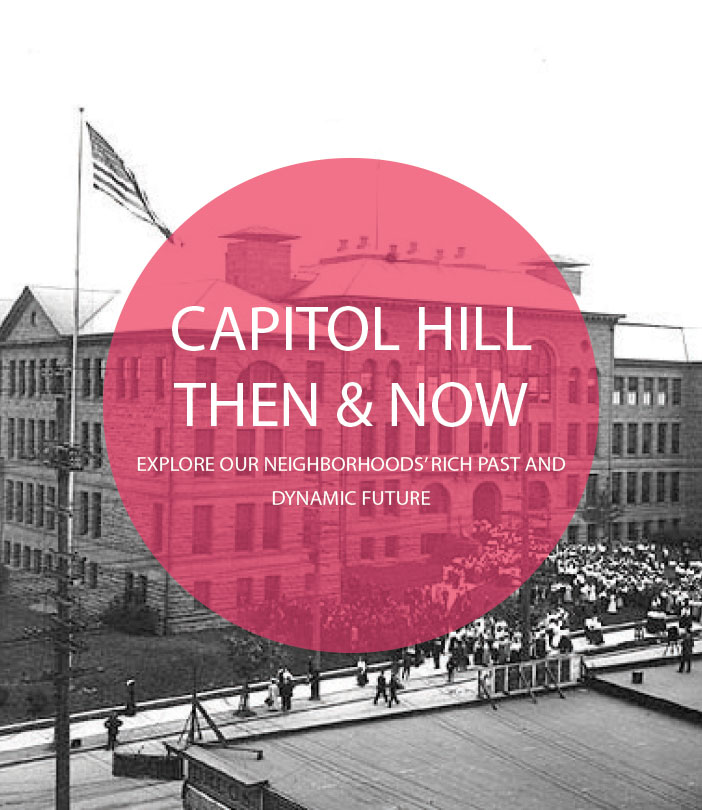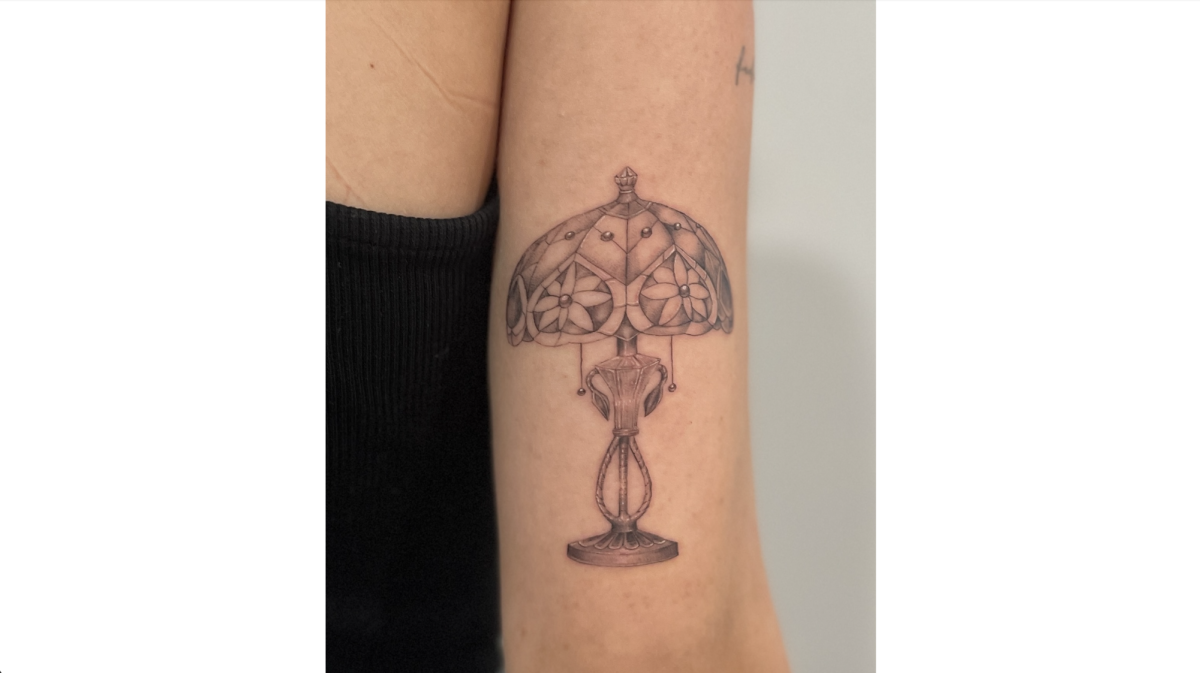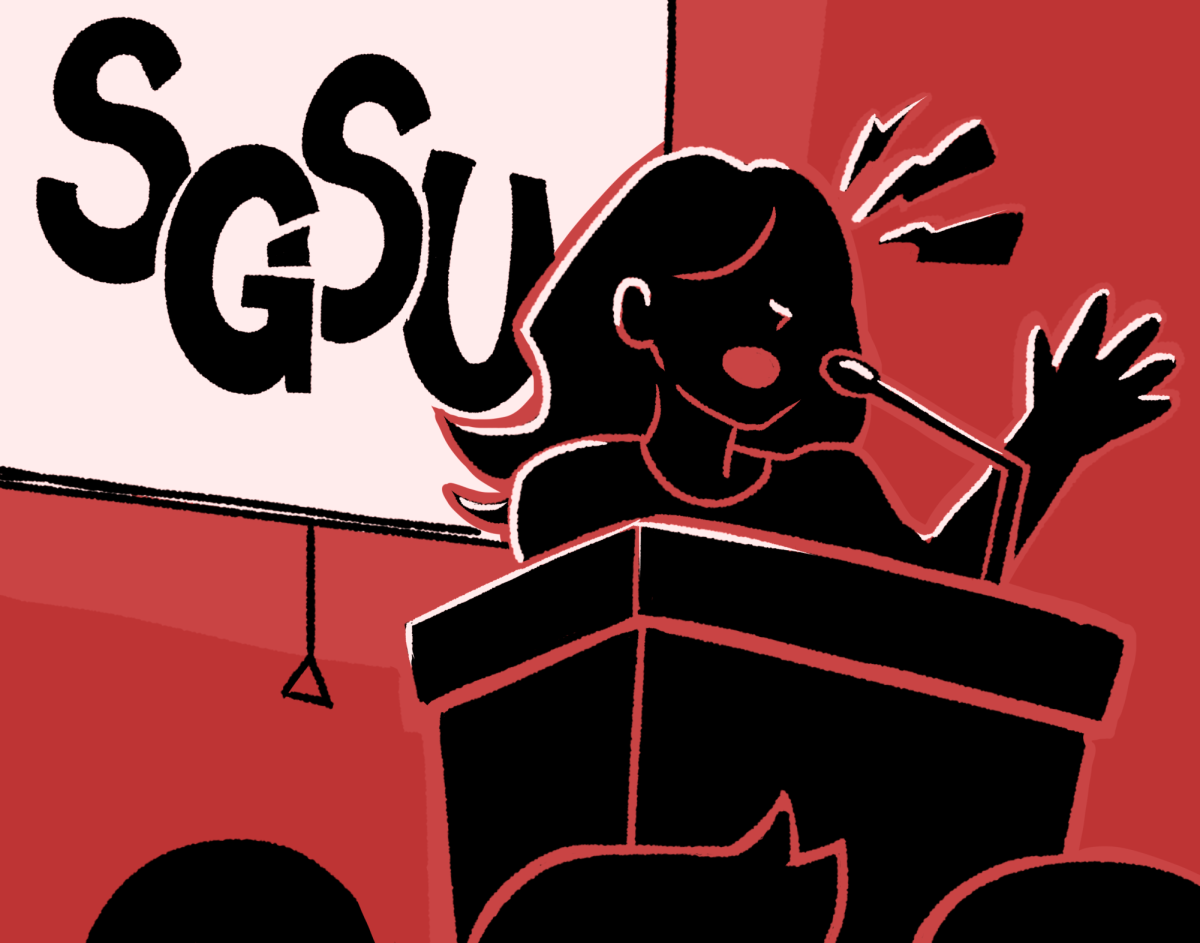Sitting in a Capitol Hill alehouse you have just finished reading the latest release of “The Great Gatsby” by F. Scott Fitzgerald.
You take a sip from your beer to check your surroundings—men in their tailored, charcoal gray suits stand near the dark-wood booths, holding their glasses of gin as they talk something about the stock market going up.
You breathe out the smoke from your cigar.
The rain starts hitting hard against your window, turning your attention back to the group of men who are still talking about the stock market.
You take another sip from your beer, and listen to the melody of rain, traffic and stock market talk, as the last end of your cigar burns to ashes.
Welcome to Capitol Hill in the early 20th century.
When you look at the history of developments in Capitol Hill Seattle, you don’t realize how much it has transformed from the boomtown it was to the urban mecca it is today.
Capitol Hill, formerly known as Broadway Hill, received its new name in 1901.
One year later, Seattle High School (now Broadway High School) opened up as Seattle’s first dedicated high school on the corner of Broadway and East Pine Street. It was Seattle’s first building specifically constructed as a high school. The following year the school proved to be a huge success with 103 graduates.
That number doesn’t seem significant to us now, but in 1903 it was the largest graduating class in the history of Seattle.
However, during the 1930s, Broadway High also became a “self-help center” for adults to make it through the Great Depression. After World War II, thousands of Seattle-based service men and women returned from the war and needed to finish the high school studies they were pulled from.
Thus came the end to Broadway High in the summer of 1946, as Capitol Hill welcomed a new institution: Seattle Central Community College.
Once the high school’s auditorium, the performance hall is all that remains of the old structure on Broadway and East Pine Street.
Currently, SCCC has plans to focus on Sound Transit’s “Site D” where 10,000 square feet of Broadway property could develop into a 105-foot student-housing tower.
According to the CHS Blog, “Seattle Central and Sound Transit are poised to move forward with a process that will determine the fate of the first of four sites the transit agency plans to sell to developers around the under-construction Capitol Hill light rail station.”
The property, known as “Site D,” is two parcels of land on the western side of Broadway, located at what you might remember as a Mongolian Grill restaurant before it was acquired. It would be the first of four proposed sites around the light rail station slated for sale.
From horse-drawn trains, to the first streetcar in 1884, to the beginning operations of light-rail transportation in 2009, it’s amazing how fast development is climbing, or in this case, driving up the Hill.
However, that is not to say that some of these new developments aren’t driving people nuts.
CHS Blog tells it best:
“Stop us if you’ve heard this one before: Successful strip of retail and beloved neighborhood coffee shop displaced by mixed-use redevelopment of an early 20th century Capitol Hill building.”
The 1515 14th Ave. mixed-use apartment building project is planned to replace a stretch of storefronts off Pine Street while still preserving the historic character structure, currently home to Porchlight Coffee.
The six-story development of the La Bella Vita apartments has raised concerns from local residents for its excessive height, including Erica Chung who wrote, “Part of the charm of the Capitol Hill neighborhood is its funky low-rise buildings. By building large/huge structures, the neighborhood will become like Belltown.”
The building is planned to have 103 units, six retail units and 101 parking spots—the first 1:1 unit-to-parking ratio development the Hill has mounted in a while.
Also in the works is a 250-unit Pike/Pine apartment project that will combine 12,000 square feet of commercial space “with a preservation effort to recreate the look and feel of the auto row-era buildings” on East Union Street between 10th Ave. and 11th Ave.
Though the project won the support of the Pike Pine Urban Neighborhood Council, concerns still remained about its location.
Neumos co-owner Mike Meckling expressed his concern that the project be built to provide residents with strong noise abatement features in the busy nightlife district. He even suggested that the developer be clear in its marketing that the apartment units will be part of a noisy and active neighborhood.
In any case, the 250-unit apartment project serves as another example of the massive redevelopment of Capitol Hill.
The responses heard for many of these projects echo a kind of nostalgia for the historic 20th century buildings that characterizes what had been a boomtown for our original Seattlelites.
Capitol Hill of the 1900s feels something like a bustling small town. An alehouse goer, your nose buried in Fitzgerald’s classic, you would never believe what this neighborhood would become.
You don’t know that almost a century later you’d be hearing progressive-trance mixes and ambient-house tracks playing across the street at Trinity.
You would see young men and women wearing oversized headphones, playing the DJ subculture that is quickly growing in the downtown district.
Loud music, lounges and nightclubs. Everywhere.
So much has changed.
But what we don’t realize is that we’re standing above a labyrinthine network of underground passageways.
We don’t realize that we’re in a place where the new overlays the old.
Though the speed of present-day redevelopments continues to climb the Hill, the seeds of the past will always remain.
You take another sip from your beer, and close your eyes as you go back to listening to the melody of rain, traffic and stock market talk.
Finally, something that hasn’t changed at all.
Chelsee may be reached at [email protected]











